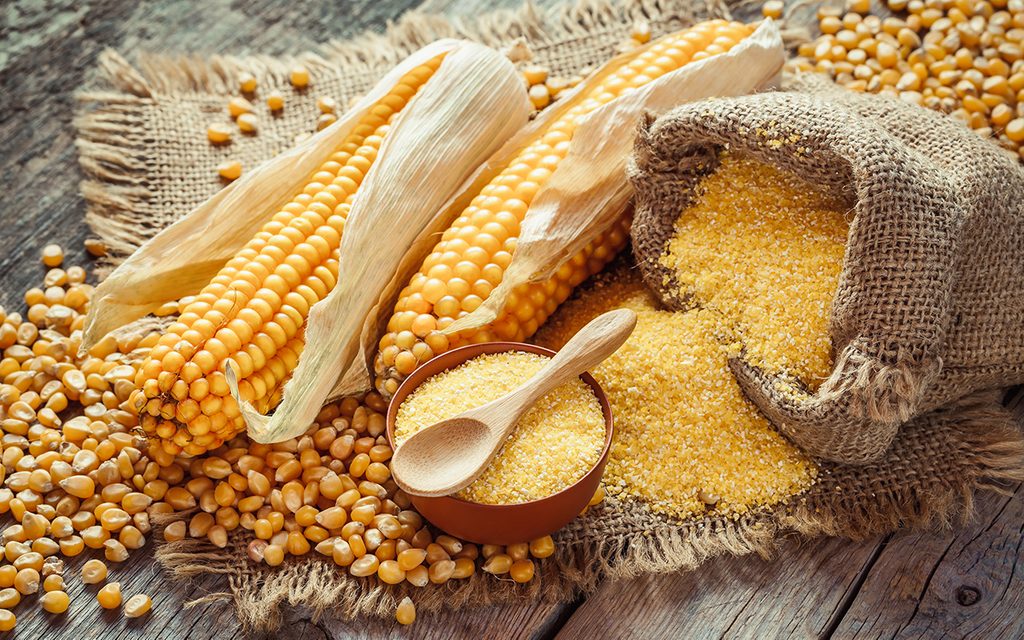Grits vs Polenta: What’s the Difference?
Updated: Dec. 12, 2023

If you've ever wondered about when to use grits vs. polenta, or when to substitute plain old cornmeal, we've got some answers!
Hominy grits, polenta and cornmeal are all made from the same grain, but they taste different and are used to make different foods from around the world. So when is it best to opt for grits vs. polenta, and when is it OK to substitute cornmeal?
Most of us are pretty familiar with sweet corn. Field corn (also called dent corn), however, is a whole different thing. This corn is starchier than its sweet cousin, so you can’t eat it straight off the cob (but livestock can!).
When it is grown for people, it’s usually turned into cornmeal or processed and made into hominy, which is ground coarsely into grits or finely to make masa harina for corn tortillas or sopes. Traditional Italian polenta is made with a harder type of corn called flint corn, which is prized for its nuanced flavor and for how well it keeps.
Let’s take a deeper look at the differences and what types of meals you can make with each type.
What are grits?
Hominy grits are a staple in Southern cuisine. To make hominy, corn is processed using a technique called nixtamalization, in which the corn is treated with lime (calcium hydroxide) or lye (sodium hydroxide). After an overnight soak, the alkaline solution loosens the corn’s hull and softens the kernels. The process also makes it so the B vitamin niacin can be more easily used by the body.
Once corn has been nixtamilized, the kernels are referred to as hominy, which is the main ingredient in a stew called posole. When hominy is dried and ground, grits are what you get.
How to cook grits
You’ll find two varieties of grits at the store: stone ground and instant, either of which can be made with white or yellow corn. Instant grits are partially cooked before they’re dried, so they cook up in as little as 10 minutes. Stone-ground grits, on the other hand, are a whole-grain product, so they’re more nutritious but also take longer to cook (30 to 45 minutes).
Many people cook grits with water and add butter and cheese at the end. Others use milk or cream for cooking the grits, or sub in chicken broth. Whichever you use, you’ll want to start with a four to one ratio of liquid to grits, and add more liquid to the pot as needed.
You can eat grits in the traditional way (aka cheesy grits), serve a wonderful shrimp and grits, make some “loaded” cheesy grits, enjoy them in a breakfast bowl or even turn them into dessert with a grits pie.
What is polenta?
Polenta, a northern Italian dish, is usually made from Italian flint corn, which has a firmer texture than American dent corn and was historically ground using a more complicated process. Unlike grits, polenta is made with nothing but pure, untreated corn. Polenta is so important in Italy that there are several festivals that celebrate it.
How to cook polenta
At its most basic, the process of cooking polenta is very similar to the one for cooking grits: combine ground corn with around 4 cups of liquid and some salt; whisk and simmer, stirring occasionally, until you have a delicious thick porridge.
Polenta is often made with broth and added aromatics and finished with butter and cheese. It is commonly served on its own, but can also be used as a base for hearty tomato sauce, sausage and mushrooms or braised meats like this Rosemary Beef Roast over Cheesy Polenta. If you don’t want to worry about your polenta while it’s cooking, try making it in a slow cooker like our Creamy Polenta and Balsamic Glaze recipe.
When you can’t find polenta at the store, try substituting coarsely ground yellow cornmeal. Yellow stone ground grits, although they have a bit of a different flavor, can also work in a pinch. Many stores also carry already-cooked polenta packaged in tubes, which can be sliced up and fried, just like home cooked polenta that has been allowed to chill. Polenta Parmigiana and Polenta Rounds with Sausage Ragout are just a couple dishes you can make with pre-cooked polenta.
What is cornmeal?
If you’re looking to make a killer batch of cornbread, cornmeal is what you want. Cornmeal is made by milling dried corn. It can be ground fine, medium or coarse. It’s usually yellow or white, but it can also be blue or red, depending on the type of corn used.
How to cook cornmeal
Although cornbread and corn muffins may be the most familiar dishes made with cornmeal, there are plenty of other cornmeal recipes including: pancakes, quiche and fried chicken. For smaller applications, we love using cornmeal in the breading for fish fillets or pork chops, or to dust the bottom of bread or pizza so it won’t stick to the pan or the oven. You can even use it instead of grits or polenta in recipes, but the resulting dish won’t have the same flavor or texture as the original.
